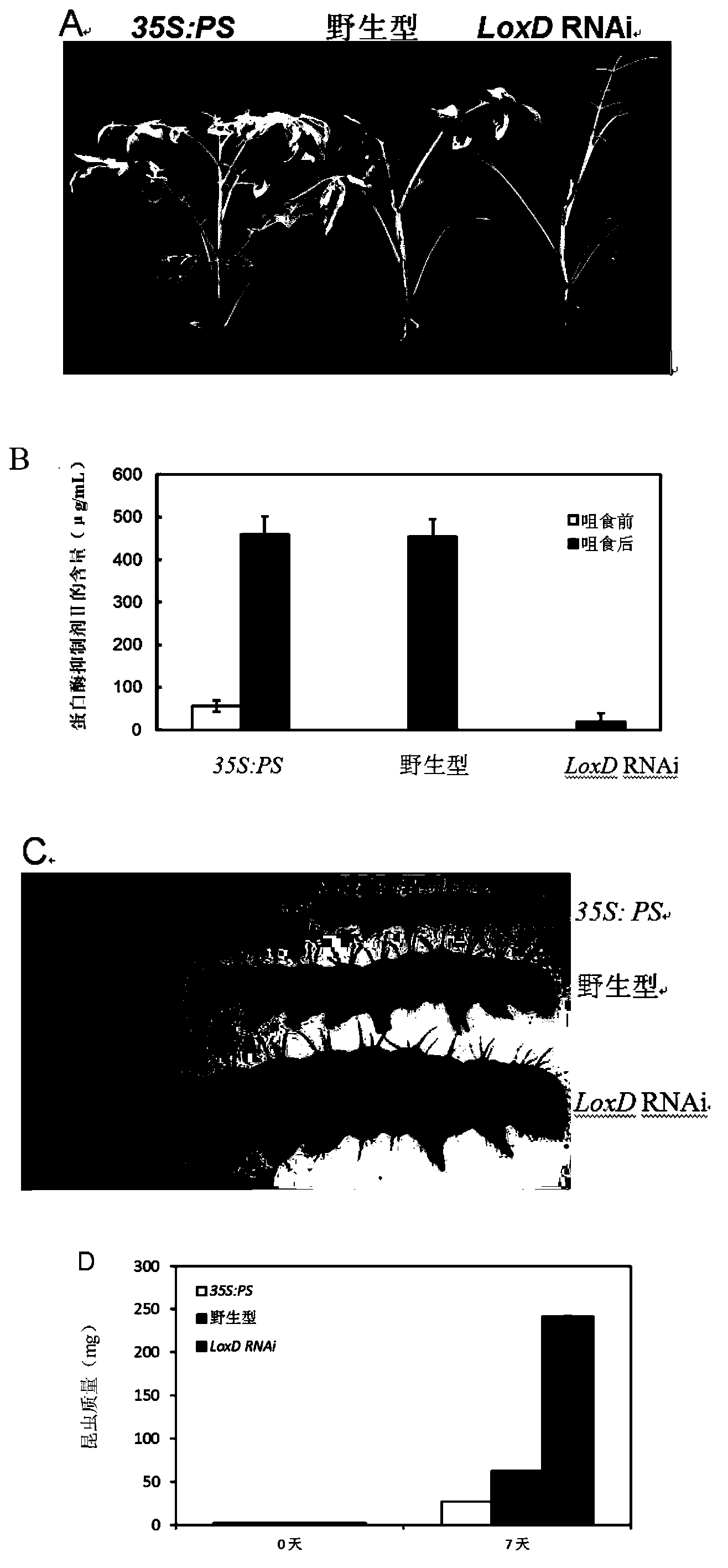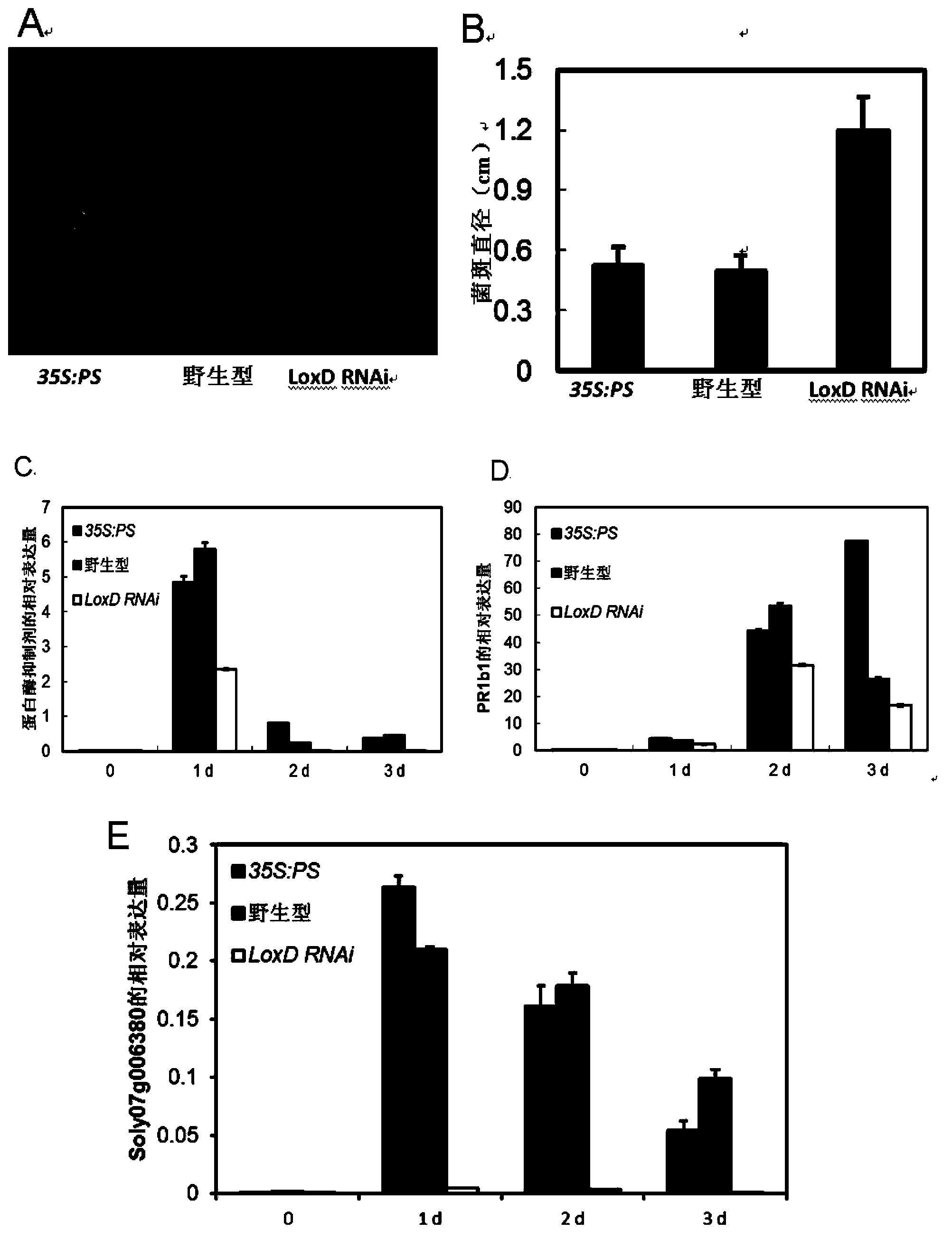Application of Lox (lipoxygenase) D gene of tomato in regulating and controlling plant resistance
A transgenic plant, plant technology, applied in applications, plant products, genetic engineering, etc.
- Summary
- Abstract
- Description
- Claims
- Application Information
AI Technical Summary
Problems solved by technology
Method used
Image
Examples
Embodiment 1
[0029] Embodiment 1, obtain the recombinant vector that suppresses LoxD gene expression
[0030] The total RNA of tomato (Solanum lycopersicon) variety CM was extracted, the cDNA obtained by reverse transcription was used as a template, and PCR amplification was performed with primer 1 and primer 2.
[0031] Primer 1: 5′-GCG CTCGAG AACCAGCAGTTTCAAGGAAGGAGG-3′ (upstream primer, the base underlined is the XhoI recognition site)
[0032] Primer 2: 5′-GCG ACTAGT AACCGGACCACATGCAAACCCCT-3′ (downstream primer, the base underlined is the SpeI recognition site)
[0033] A 465bp PCR product was obtained. After sequencing, the nucleotide sequence of the PCR product was the 106-570th nucleotide from the 5' end of Sequence 2 in the Sequence Listing, which was a partial fragment of the LoxD gene.
[0034] After the above PCR product was double-digested with XhoI and SpeI, it was mixed with the PUCC RNAi vector (recorded in Gan D, Zhang J, Jiang H, Jiang T, Zhu S, Cheng B. Bacterially ...
Embodiment 2
[0037] Example 2, the acquisition and functional identification of LoxD RNAi transgenic tomato
[0038] 1. LoxD RNAi transgenic tomato
[0039] 1. Obtaining recombinant bacteria that inhibit the expression of the LoxD gene
[0040] The recombinant vector pCAMBIA 1301-LoxD RNAi obtained in Example 1 to suppress the expression of the LoxD gene was transformed into Agrobacterium AGLO (recorded by Li C, Liu G, Xu C, Lee GI, Bauer P, Ling HQ, Ganal MW, Howe GA.The tomato suppressor of prosystemin-mediated responses2 gene encodes a fatty acid desaturase required for the biosynthesis of jasmonic acid and the production of a systemic wound signal for defense gene expression. Plant Cell. obtained from the Institute of Genetics and Developmental Biology), picked a single clone, and cultured overnight at 28°C with shaking in LB liquid medium containing kanazyme and rifampicin antibiotics to obtain transformants.
[0041] The transformants were identified by bacterial liquid PCR, using ...
PUM
 Login to View More
Login to View More Abstract
Description
Claims
Application Information
 Login to View More
Login to View More - R&D
- Intellectual Property
- Life Sciences
- Materials
- Tech Scout
- Unparalleled Data Quality
- Higher Quality Content
- 60% Fewer Hallucinations
Browse by: Latest US Patents, China's latest patents, Technical Efficacy Thesaurus, Application Domain, Technology Topic, Popular Technical Reports.
© 2025 PatSnap. All rights reserved.Legal|Privacy policy|Modern Slavery Act Transparency Statement|Sitemap|About US| Contact US: help@patsnap.com



